Why is the world interested in Armenia? Because of it’s newsworthiness. What interests me? Prince Vahan, who led the Byzantines at Yarmouk to their disastrous defeat, a footnote in Armenian history and a behemoth in Byzantine history. Anyways.
In fact, Armenia is the last surviving relic of the Byzantine Empire. Before looking into it’s history, it makes much sense for one to look at the historic Armenian homelands – not their claims and super-claims but at Armenia created as a part of Treaty of Sevres. 
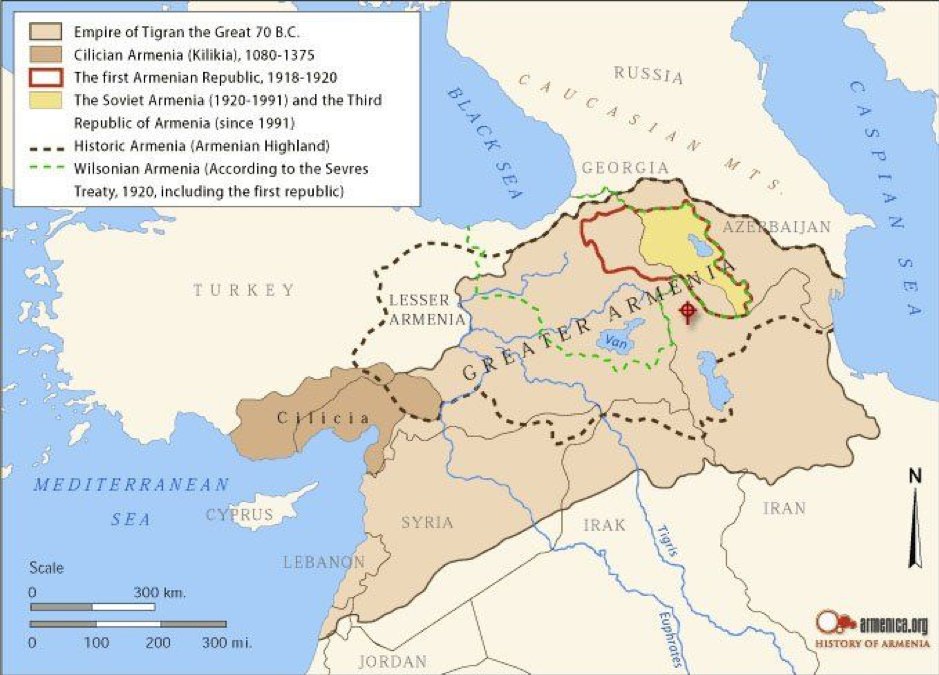
Just look at that green line. Armenia of Woodrow Wilson is more than 10 times that of the current Armenia!! Now, jumping into history. Armenian Highlands had settlements and cultures from the Neolithic Era.
The oldest known settlers in the Armenian Highlands who can be identified with Armenia are the Hayasa-Azzi Tribes commonly identified as Proto-Armenians who settled in the area some 3500-4000 years ago.
They formed the Nairi Tribal Union, a word which is still used as a synonym for Armenia. The legendary founder of Armenia, Hayk who fought against Babylon seems to be from this tribal confederacy. They were at frequent war with the Hittites and were ultimately subjugated by them.
After this, another group called the Armens settled in the area from Northen Balkans. Greek inspired legends say that Armenios, the founder of Armens was one of the Argonauts. A 1115 BC inscription talks of a battle between 20000 Armens and Tiglath Pilaser I of Assyria.
The oldest reference, though, comes from Naram-Sin’s conquests where he subjugated the Armani in 2300 BC. Thuthmose III called them Ermenen and said that in their country, heaven rests on four pillars. But, the oldest attested record is from the Behustin Inscription(520 BC).
The amalgamation of the Nairi and Armens led to what is Armenia. It is curious to note that Armenians have two segments – Hay residing in Hayasthan and Armenian living in Armen, a representation of the early demarcation.
The first Armenian kingdom of note is Ararat or Urartu(860 BC-590 BC) which ruled from Tushpa(modern Van). They seem to be one of the constituents of the Nairi Union. Yerevan(Erebuni) was founded in 782 BC by the Urartu king Argishti I.
They were under continuous fight with the Mesopotamia, being defeated and subjugated many a time, ultimately falling to the Medes after it is considerably weakened by the continuous Cimmerian and Scythian raids. 
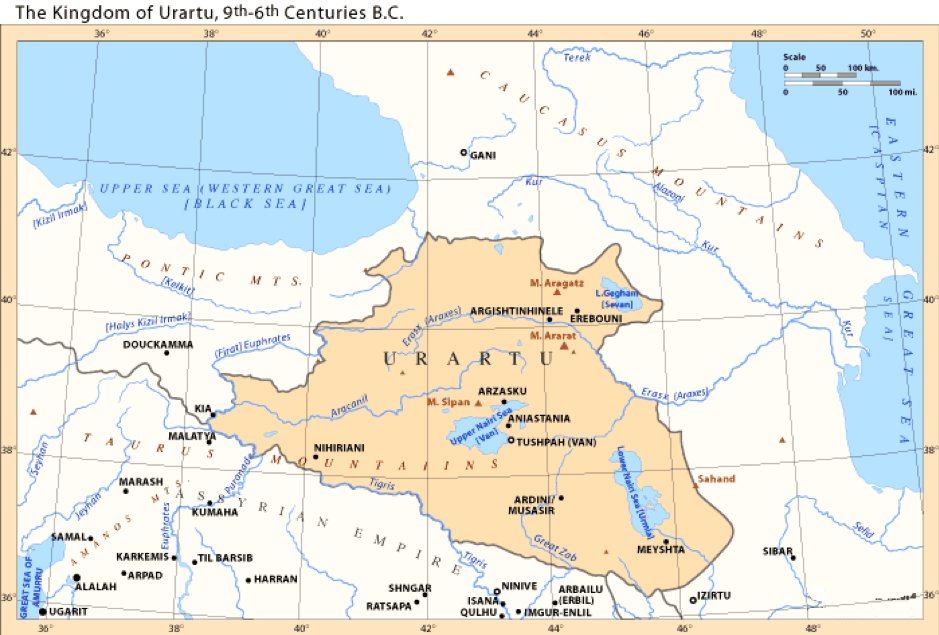
A new kingdom which became famous as Armenia(though Urartu was used interchangeably) was formed by the Yervanduni(Orontides) with the capital at Armavir. They actually ruled the Persian Satrapy of Armenia and became independent under Artashes I in 190 BC when he rebelled against
the declining Seleucid Empire and is considered to be the first major Armenian Kingdom. Tigran II of this Artashisian Dynasty(190 BC to 1 AD) was the most powerful Armenian ruler ever, with his kingdom extending from Georgia to Israel.
It dwindled with his death, with Rome and Parthia trying to woo Armenia in their attempt to subjugate Anatolia. The kingdom was ultimately subsumed into Roman Empire.
The next rulers were the Arshakuni(Arsacids) and were related to the ruling dynasty of Parthia. This was a compromise between Rome and Parthia where a prince of Parthia will ascend the Armenian throne, but on consent by Rome.
Till 118, Armenia was a Roman province and from then on, a Roman vassal. But, it was a bone of contention. The Sassanids, who overthrew Parthia naturally had an anti-Armenian Policy and Armenia converted to Christianity in 301 AD to move away from Zorastrianism as a protest –
thereby becoming the first Christian kingdom in the world.
Nothing effectively changed - parts of Armenia under Sassanids and parts under the Byzantines. When the Arsacids fell in 428, eastern part of Amenia was annexed to Persia and Zorastrianism was forcibly imposed.
Nothing effectively changed - parts of Armenia under Sassanids and parts under the Byzantines. When the Arsacids fell in 428, eastern part of Amenia was annexed to Persia and Zorastrianism was forcibly imposed.
This led to an open rebellion under Prince Vartan who died leading 66000 rebels against an elite Sassanid Army at the Battle of Avarayr. But, the Sassanids gave up forced conversion into Zorastrianism by then.
This led to an open rebellion under Prince Vartan who died leading the rebels at the Battle of Avarayr. But, the Sassanids gave up forced conversion into Zorastrianism by then and it became business as usual.
In 554, the Second Council of Dvin separated Armenian Church from Greco-Roman Church, creating an independent Church body. The church still exists. By the time of Muslim invasions, Armenia was almost independent but under formal Byzantine rule.
When the Arabs erupted out of Arabian Peninsula and started to take on both the Sassanids and Byzantines at the same time, Prince Vahan, an Armenian commander led the Byzantines in an effort to destroy the nascent Arab force - the Byzantines were severely defeated and
Vahan was killed in retreat from Yarmouk. A follow up battle destroyed the Sassanids at al Qassidiyah and led to the eventual conquest of Sassanid Empire and Asian Byzantine Empire for good.
Although Battle of Yarmouk is little known today, it is one of the most decisive battles in human history. If it wasn’t for Khalid and had Heraclius’ forces prevailed, the modern world would be so changed as to be unrecognisable. - Mark Walton.
Armenia resisted till 654 before it was subdued. After 200 years, Armenia declared independence in 886 under the Bagratunian Dynasty. But, the Byzantine policy of weakening Armenia and ultimately annexing it by 1045 means that Caucusus was open to raids from the nomadic tribes.
A new Armenian kingdom was formed under Prince Ruben, who fled Armenia to Cicilia which had an Armenian population. The kingdom came to be known as Armenia Minor or Cicilian Armenia. This kingdom played a major role in the Crusades.
It ultimately fell to the Mamluks in 1375 and the last Rubenian King, Levon VI fled to France. From him, the title King of Armenia passed to the King of Cyprus, then to Venice and then to Savoy.
Under the Muslim rule, the position of Armenia was no different from the Sassanian days – Eastern Armenia ruled by Persia and Western Armenia by the Ottomans. Though they were annexed, there was a level of local independence with Armenian Principalities existing everywhere.
Armenia again entered European politics when Russia annexed Eastern Armenia from Persia in 1828. That was the start of the Armenian Question – with Turkey forced to accept special treatment to Armenians through the Treaty of San Stefano and others,
much to the chagrin of the other residents of the area. This interference and the potential use of Armenians as a fifth column turned Turkey against it’s Armenian subjects and attacks on them became common by 1890s in spite of the promises Turkey made to Europe.
But, more was yet to come – The Young Turks ruling Turkey decided to liquidate Armenians completely to avoid the Armenian Question. The 1915 massacres means that 80% of Armenian population of Western Armenia was liquidated. By 1923, the area was effectively de-Armenized.
The Russian Caucasus campaign was a huge success but, the Bolshevik rebellion of 1917 toppled the applecart and in 1918, Armenia declared independence when Soviets declared immediate cessation of fighting. The Turks were allowed to take even parts of Eastern Armenia. 
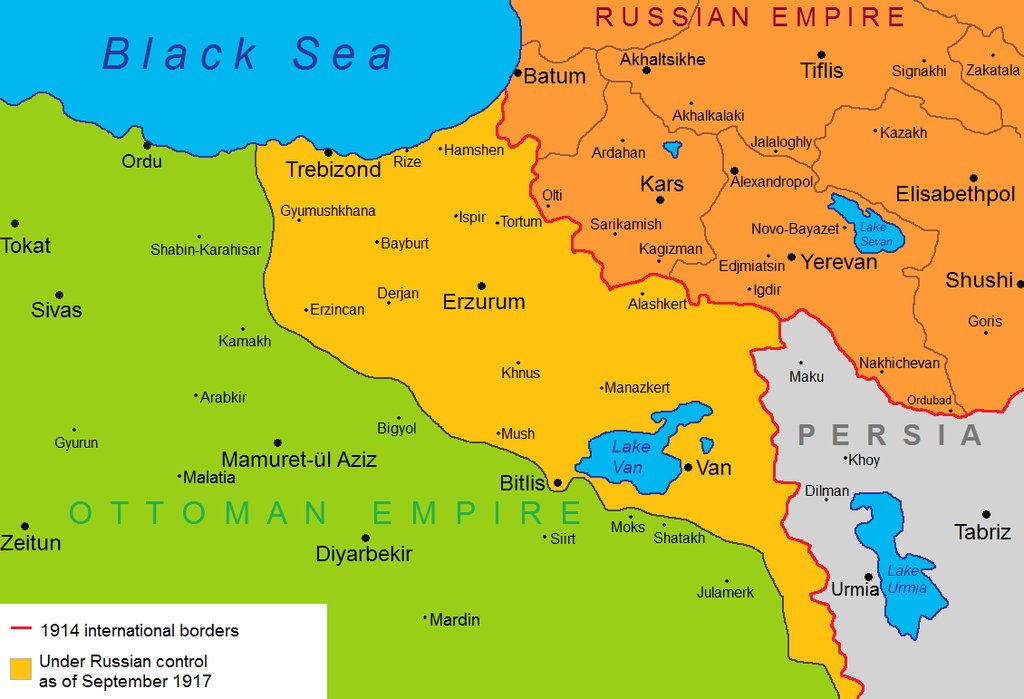
The Turks advanced, taking Erzum and Kars and demanded territories till Tiflis, forcing Georgia and Armenia to declare independence. Turkish advances continued, till Armenia halted the Turks when they were 7 km from Yerevan and signed the Treaty of Batum. 
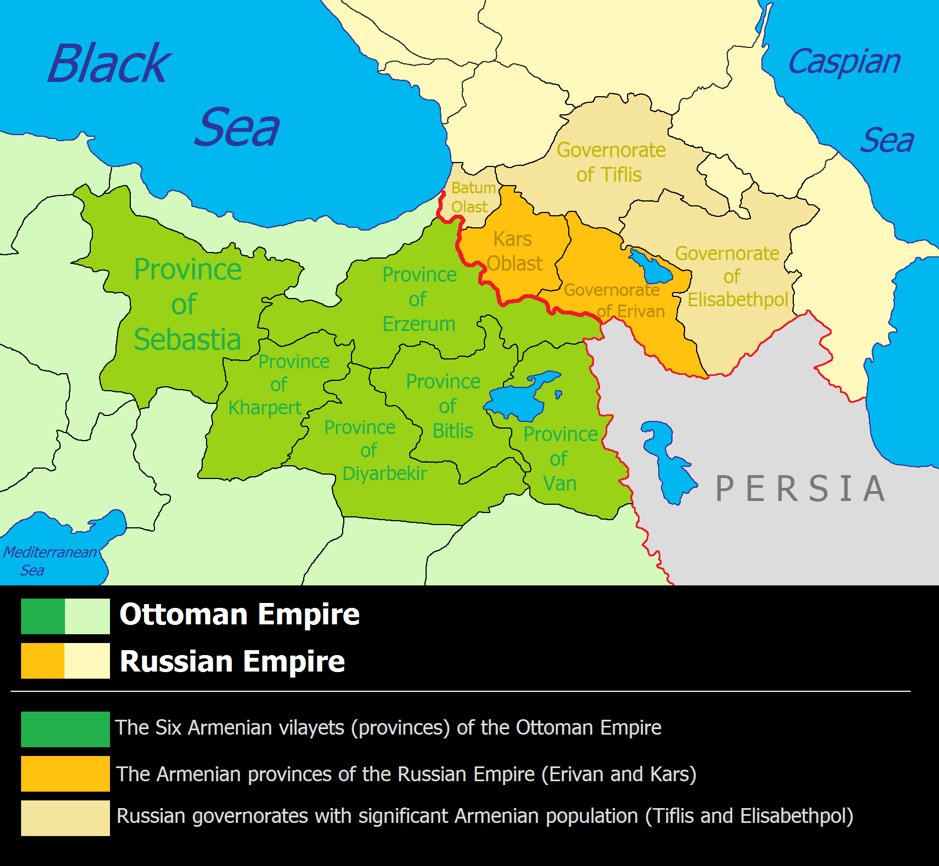
But this small country was a shadow of what Armenia was – in fact, it’s less than ten times the Armenia proposed in Sevres. There were Armenians in every bordering country and in no time, 350000 people fled into Armenia. 
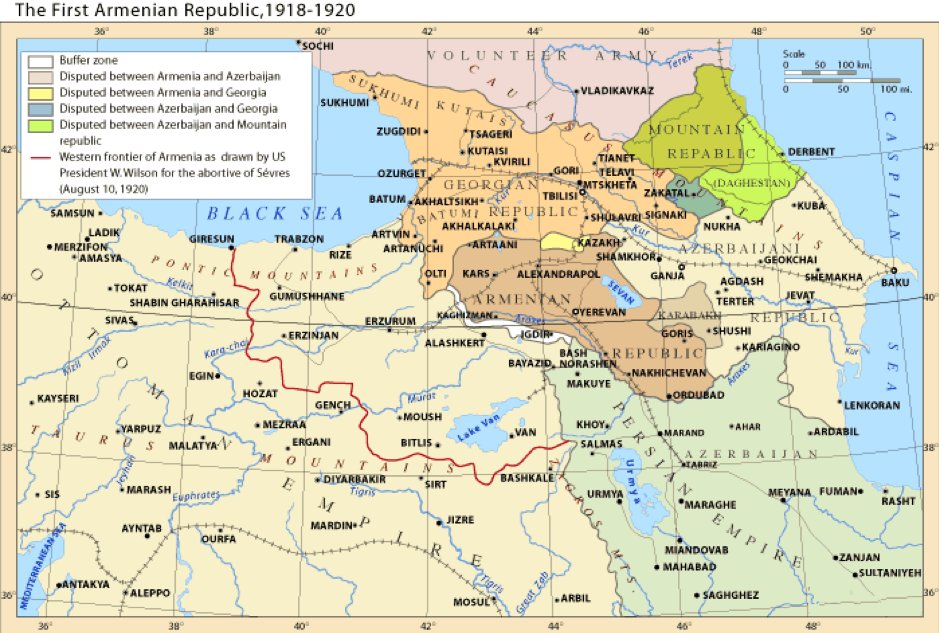
1920 was the period of crisis, with Turkey advancing from one side and Soviet Russia, the other. The war ended with Armenia becoming a part of Soviet Russia and the territorial changes involving Kars and other territories were ratified.
In 1988, there was a movement for merger of Astrakh or Nagorno-Karabakh, an Armenian majority area into Armenian SSR and this led to Azeri retaliation leading to massacres in Baku, Kirovabad and other cities.
This simply led to an open war with Astrakh being the rebellious province of Azerbaijan firmly supported by Armenia, which became independent on 21 Sep 1991 on the dissolution of Soviet Russia and over which fights erupt every now and then including the current round of fighting.
Reading through all this, one would notice that Armenia is a just another province over which it's Western and Eastern neighbours played a pingpong match. It was always partitioned and there is much to talk about it even in 3500 years of history. But, there is one striking thing.
For 2500 out of 3500 years, Armenia was subjugated. In an area where major civilizations disappeared without a trace and people migrated everywhere, isn't it surprising to see that a small country stood it's ground culturally and
ensured a civilizational continuum for such long a period, even though it's subdued again and again, that too in the same geography? I generally don't post these many maps. But, this time, it's different. 3500 years, same geography and civilizational pride. How many such exist?
I don't know whether Azerbaijan will ever interest me, but Georgia is another one which intrigued me. And that's because the Georgian king Erekle was in Delhi as a part of Nadir Shah's Army. How did these people preserve their culture and tradition for such long?
Addenda: Nadir Shah organized the general area into four Khanates - Erivan, Nakhchivan, Karabakh, and Ganja with Erivan(Yerevan) and Nakhchivan forming the core Armenian lands. 
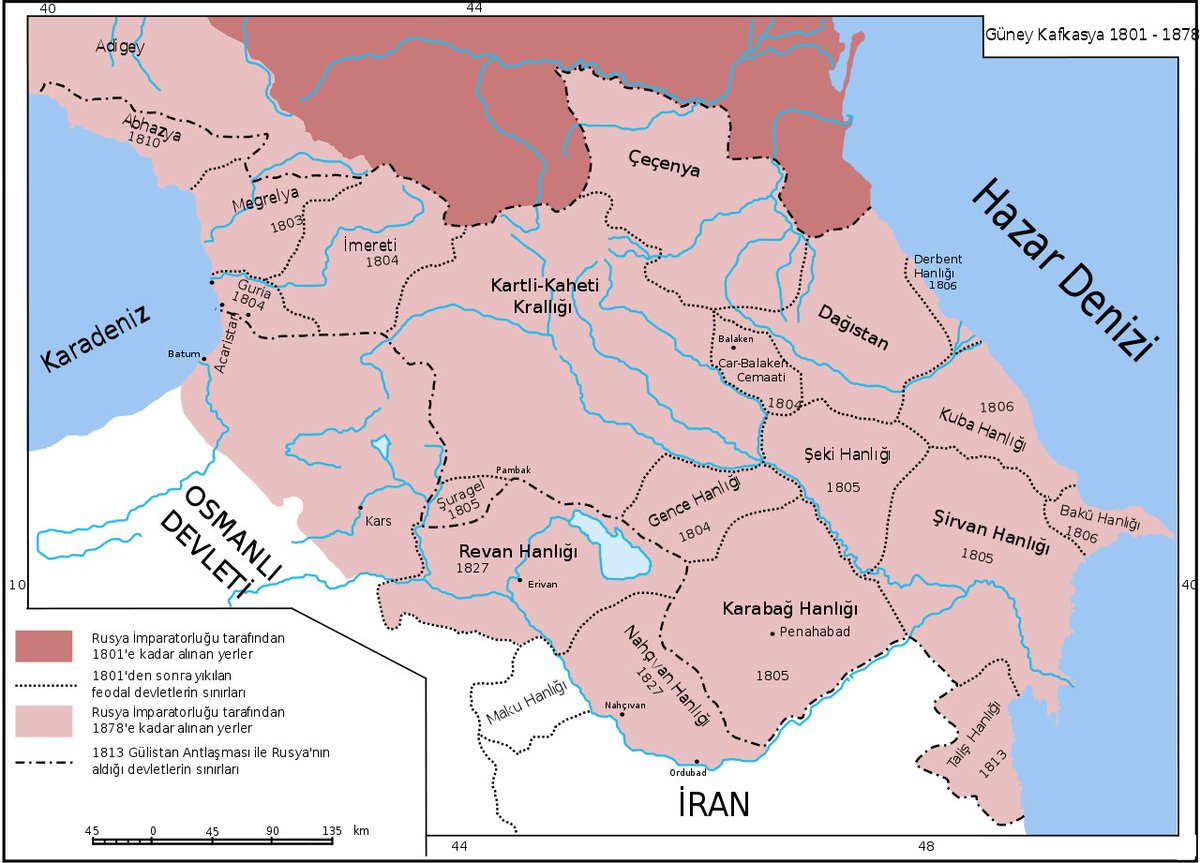
The Russian march south started with Georgia and continued on - Erivan fell in 1828 and became a part of Armenian Oblast of Russian Empire. The coastal tract - Kuba, Shirvan and Baku became Baku Governorate. Ganja became Elisabethpol Governorate. 

• • •
Missing some Tweet in this thread? You can try to
force a refresh






